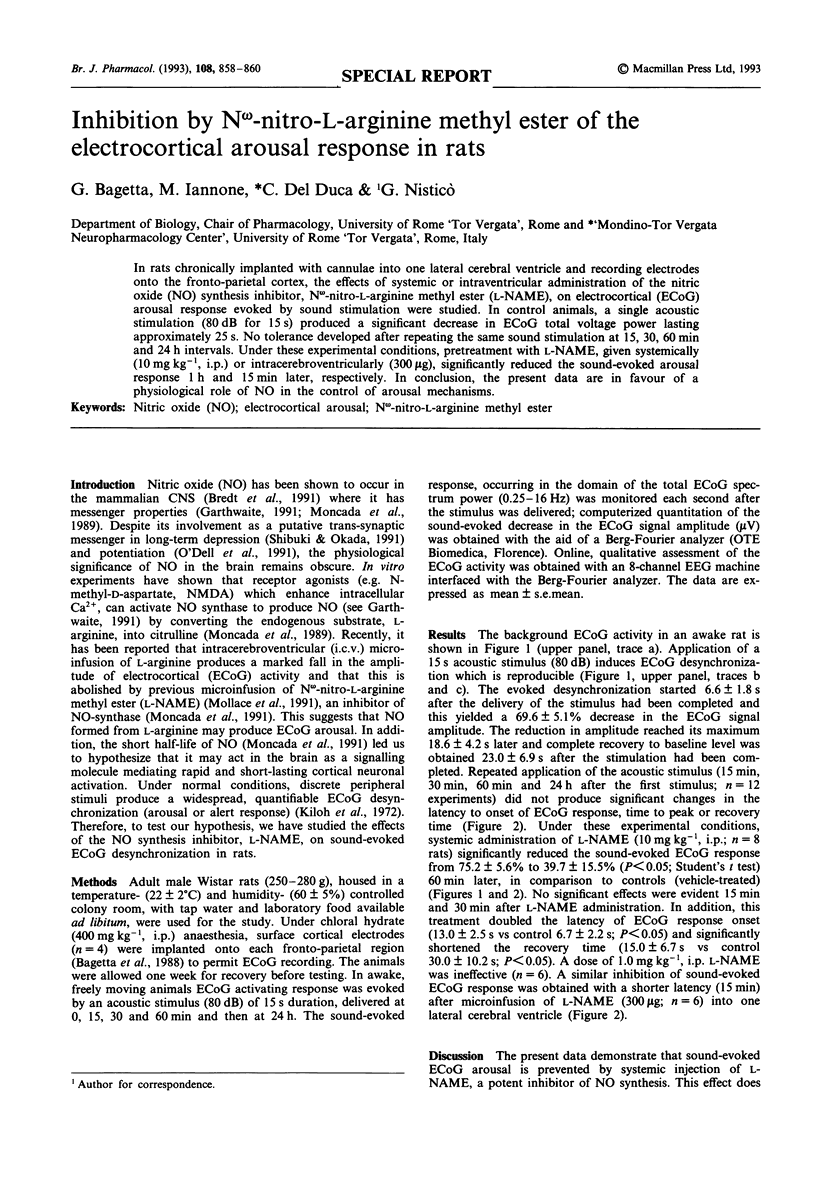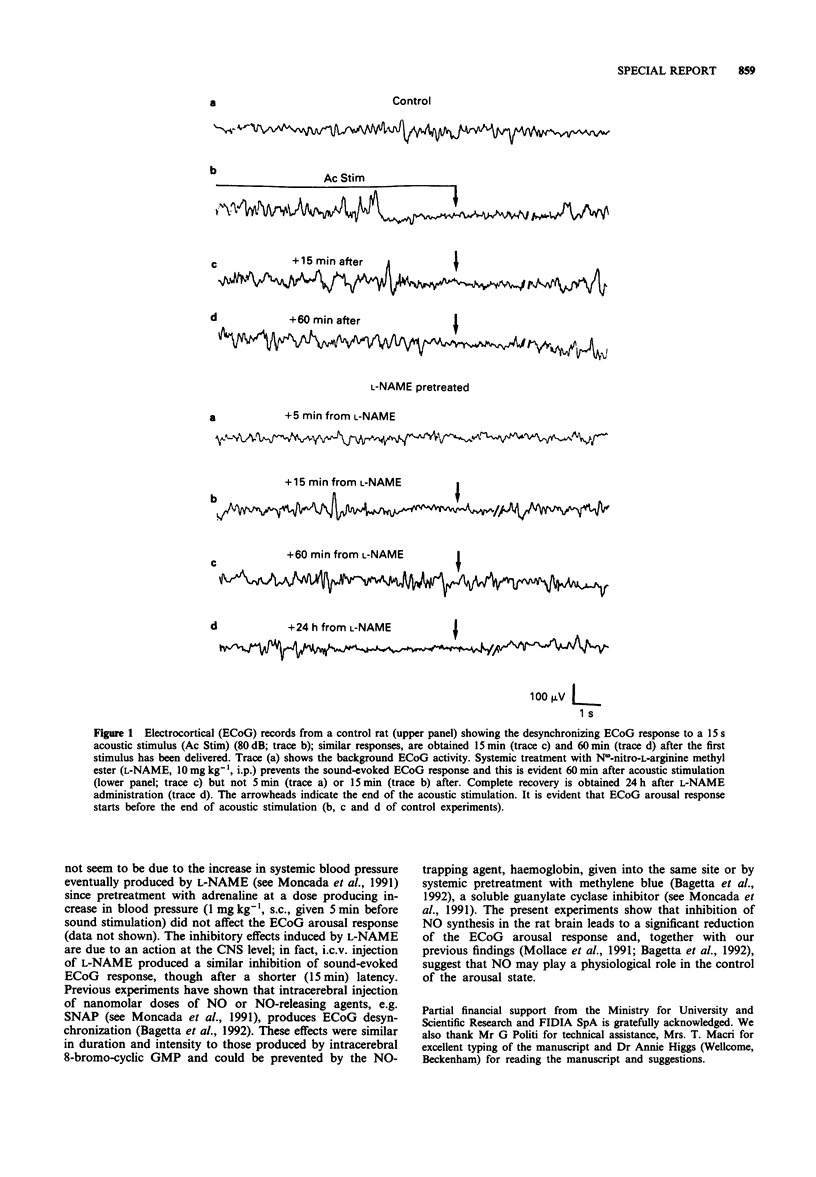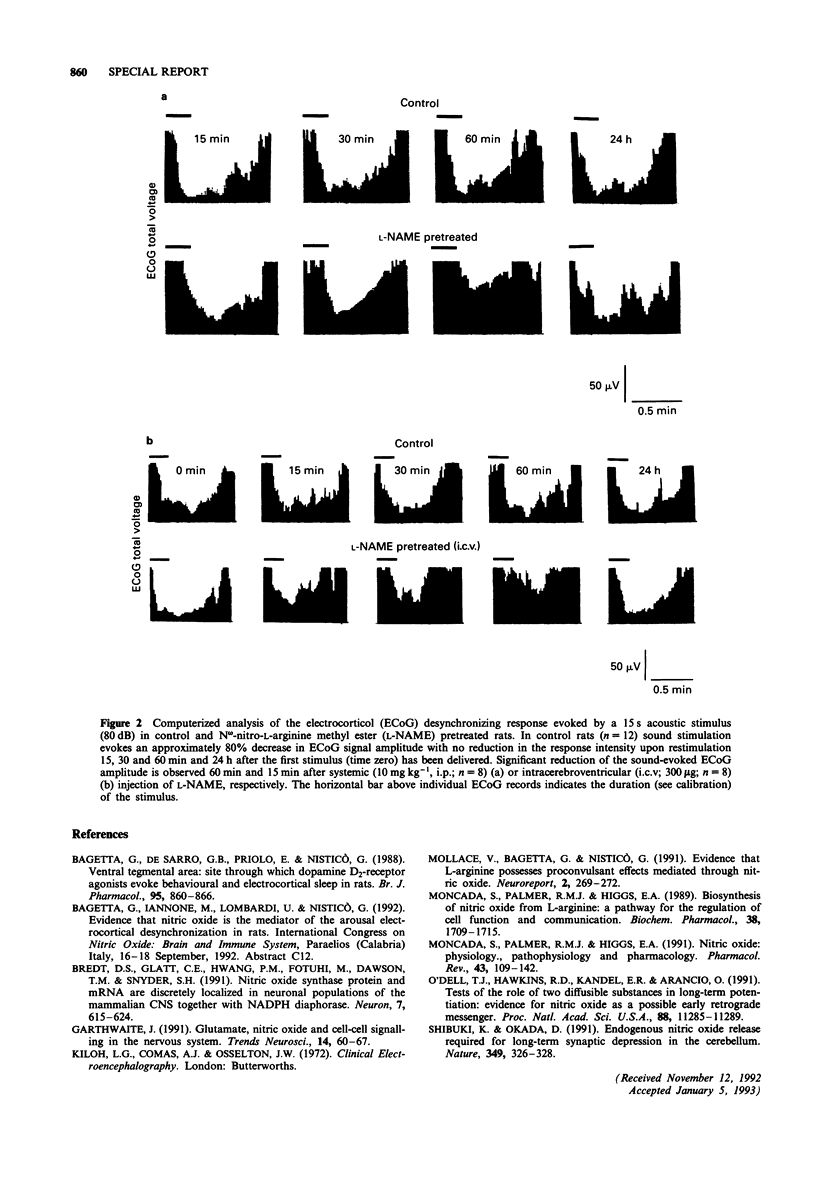Abstract
In rats chronically implanted with cannulae into one lateral cerebral ventricle and recording electrodes onto the fronto-parietal cortex, the effects of systemic or intraventricular administration of the nitric oxide (NO) synthesis inhibitor, N omega-nitro-L-arginine methyl ester (L-NAME), on electrocortical (ECoG) arousal response evoked by sound stimulation were studied. In control animals, a single acoustic stimulation (80 dB for 15 s) produced a significant decrease in ECoG total voltage power lasting approximately 25 s. No tolerance developed after repeating the same sound stimulation at 15, 30, 60 min and 24 h intervals. Under these experimental conditions, pretreatment with L-NAME, given systemically (10 mg kg-1, i.p.) or intracerebroventricularly (300 micrograms), significantly reduced the sound-evoked arousal response 1 h and 15 min later, respectively. In conclusion, the present data are in favour of a physiological role of NO in the control of arousal mechanisms.
Full text
PDF


Selected References
These references are in PubMed. This may not be the complete list of references from this article.
- Bagetta G., De Sarro G., Priolo E., Nisticò G. Ventral tegmental area: site through which dopamine D2-receptor agonists evoke behavioural and electrocortical sleep in rats. Br J Pharmacol. 1988 Nov;95(3):860–866. doi: 10.1111/j.1476-5381.1988.tb11715.x. [DOI] [PMC free article] [PubMed] [Google Scholar]
- Bredt D. S., Glatt C. E., Hwang P. M., Fotuhi M., Dawson T. M., Snyder S. H. Nitric oxide synthase protein and mRNA are discretely localized in neuronal populations of the mammalian CNS together with NADPH diaphorase. Neuron. 1991 Oct;7(4):615–624. doi: 10.1016/0896-6273(91)90374-9. [DOI] [PubMed] [Google Scholar]
- Garthwaite J. Glutamate, nitric oxide and cell-cell signalling in the nervous system. Trends Neurosci. 1991 Feb;14(2):60–67. doi: 10.1016/0166-2236(91)90022-m. [DOI] [PubMed] [Google Scholar]
- Mollace V., Bagetta G., Nisticò G. Evidence that L-arginine possesses proconvulsant effects mediated through nitric oxide. Neuroreport. 1991 May;2(5):269–272. doi: 10.1097/00001756-199105000-00014. [DOI] [PubMed] [Google Scholar]
- Moncada S., Palmer R. M., Higgs E. A. Biosynthesis of nitric oxide from L-arginine. A pathway for the regulation of cell function and communication. Biochem Pharmacol. 1989 Jun 1;38(11):1709–1715. doi: 10.1016/0006-2952(89)90403-6. [DOI] [PubMed] [Google Scholar]
- Moncada S., Palmer R. M., Higgs E. A. Nitric oxide: physiology, pathophysiology, and pharmacology. Pharmacol Rev. 1991 Jun;43(2):109–142. [PubMed] [Google Scholar]
- O'Dell T. J., Hawkins R. D., Kandel E. R., Arancio O. Tests of the roles of two diffusible substances in long-term potentiation: evidence for nitric oxide as a possible early retrograde messenger. Proc Natl Acad Sci U S A. 1991 Dec 15;88(24):11285–11289. doi: 10.1073/pnas.88.24.11285. [DOI] [PMC free article] [PubMed] [Google Scholar]
- Shibuki K., Okada D. Endogenous nitric oxide release required for long-term synaptic depression in the cerebellum. Nature. 1991 Jan 24;349(6307):326–328. doi: 10.1038/349326a0. [DOI] [PubMed] [Google Scholar]


